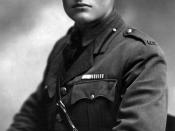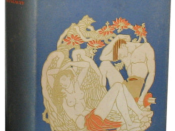Analysis of Hemingway's Narrative Technique as a Short- Story Writer
For many years, the narrative technique of Hemingway has been under debate. Writers before him had already achieved works that bear the characteristics of the modern short story, and many of their works could stand today, with those of Hemingway and of writers like Faulkner, as representative short stories of modern times. What distinguishes Hemingway both from his predecessors and from his contemporaries, however, is the theory he produces to deal with the challenge of spatial limitation which every short story writer has to face: how can he say more than his space actually allows him to say? The principle of the iceberg, as the theory is called by Hemingway, leaves distinctive imprints on his short stories: a clipped, spare style, naturalistic presentation of actions and observations, heavy reliance on dramatic dialogue, and a pattern of connection extending backwards and forwards between the various stories.
Because of the above, it is helpful to have some understanding of his theory. In Death in the afternoon, Hemingway (1932,191) points out that no matter how good a phrase or a simile a writer may have, he is spoiling his work out of egotism if he puts it in where it is not absolutely necessary. The form of a work, according to Hemingway, should be created out of experience, and no intruding elements should be allowed to falsify that form and betray that experience. As a result, all that can be dispensed with should be pruned off: convention, embellishment, rhetoric. It is this tendency of writing that has brought Hemingway admiration as well as criticism, but it is clear that the author knew what he was doing when he himself commented on his aim:
...I always try to write on the principle of the...


